
4WHEEL driving is a game of individualism. As pragmatic as we like to think of ourselves, the reality is we’re the black sheep, the ones who rock up to a barbecue with half a pig instead of a bottle of wine.
We’re the ones who dream of spending our hard-earned holidays in the middle of a desert, 1000km from the nearest internet connection with nothing but the stars and a campfire as company. It’s something that sneaks through with our vehicles, too.
 Even the most practical in our midst still throw a little flair in: different tyres than our mates, different driving lights, trick bar work; all signs that we were never meant to blend in with the crowd. It’s this uniqueness that first drew us to Josh Farmer’s one-of-a-kind Mitsubishi Challenger, a 4WD as uncommon as it is practical.
Even the most practical in our midst still throw a little flair in: different tyres than our mates, different driving lights, trick bar work; all signs that we were never meant to blend in with the crowd. It’s this uniqueness that first drew us to Josh Farmer’s one-of-a-kind Mitsubishi Challenger, a 4WD as uncommon as it is practical.
Josh first laid eyes on the mid-sized Mitsi a little over two years ago. With a history in the triple diamond brand and an inkling at the untapped potential hiding underneath, Josh knew he had to have it.
Based on the Triton platform, the Challenger has a heritage dating back to the ’70s. They’re adorned with first-place wins from some of the most remote countries in the world and, like most ute-based wagons, only make a good thing better. Of course, all of that is completely pointless if it can’t hold its own on Aussie tracks and, for that, Josh had his work cut out for him.
The first step was providing some serious frontal protection. With kangaroos in plague proportions and droughts driving them closer and closer to main roads, an MCC Falcon bar seemed like the obvious choice; the steel construction and integrated uprights fortify the Challenger’s front-end and vitals.
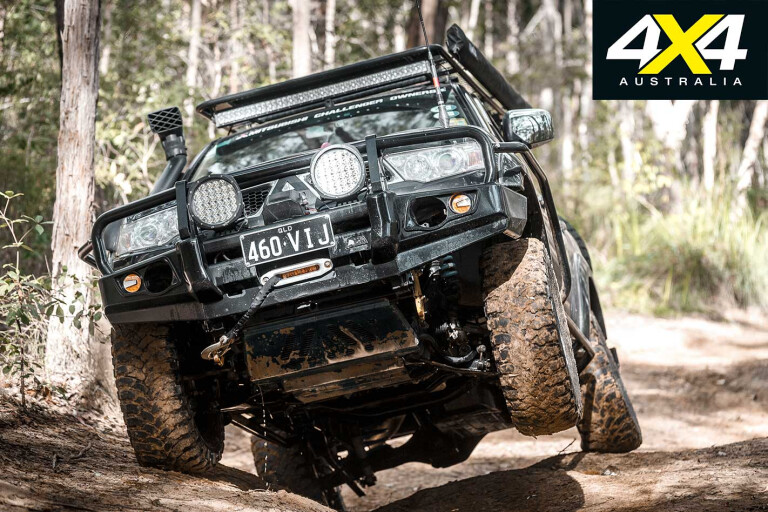
Hidden deep within its steel embrace is a 12,000lb 12V winch for when ambition outweighs ability. Josh has specced-up custom-rated recovery points straight to the frame when double line pulls are a must.
Moving farther into the bush – and further down the flanks – Josh’s up-armoured the Mitsi’s sills and front guards with a set of intricately bent tube from Queensland-based Pro Tubeworx.
Giving the Challenger its distinct bush-ready appearance is the one-off rear bar from Jack Diesel Custom & Fabrications. The staunch, heavy-duty steel offering sits high, with a bumper cut protecting the rear-end sheetmetal while simultaneously giving Josh options for mounting two full-size spare tyres. Both carriers swing out with simple over-centre latches, while a Hayman Reese towbar keeps Mr Plod happy when the trailer’s hitched.
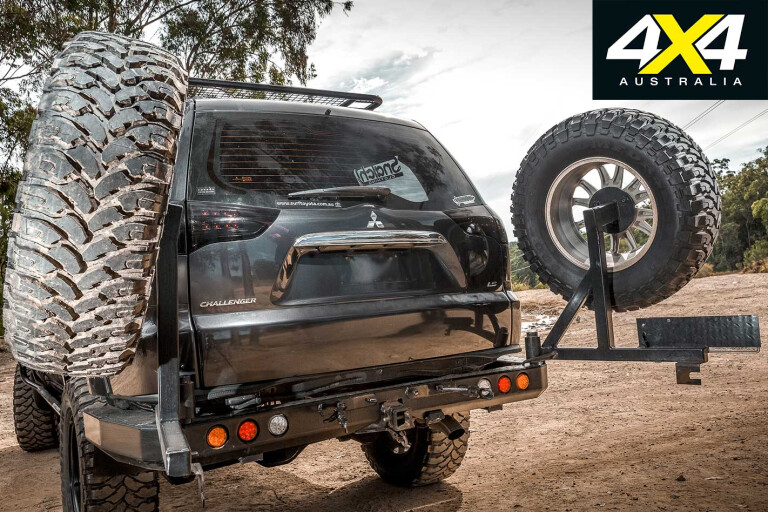
The external overhaul is completed with a 120 Series Prado roof rack bolted down to a set of Rhino-Rack crossbars on the stock sports rails running the length of the roof. This plays host to a roll-out awning for quick and easy camp setups, while the 42-inch LED light bar and matching nine-inch LED driving lights up front provide plenty of daylight when the sun dips below the horizon.
A secret Mitsubishi owners don’t want you to know is they’re actually incredibly easy to fit super-size shoes to; almost too easy. With monster wheel arches and factory flares, Josh has been able to easily slot in a set of 285/70R17 mud tyres (that’s a hair under a 33-inch tyre) front and rear.

His tyre of choice is an upcomer in the tyre market: the Comforser CF3000. Originally wrapped around the stock 17-inch alloys, Josh has since squeezed them over a set of 17x8-inch Dynamic D Hole steel wheels; the +10 offset helping to push the Challenger’s stance wider to provide side stability in off-camber situations. The modifications to make those fit? A 50mm bodylift. That’s all.
As good as extra clearance for tyres is, it doesn’t always equal extra suspension travel – wheels on the ground is what keeps 4WDs four-wheel driving. To make the Triton’s strut front end and coil rear end work to its full potential, Josh reached out to the guys from Ultimate Suspension.
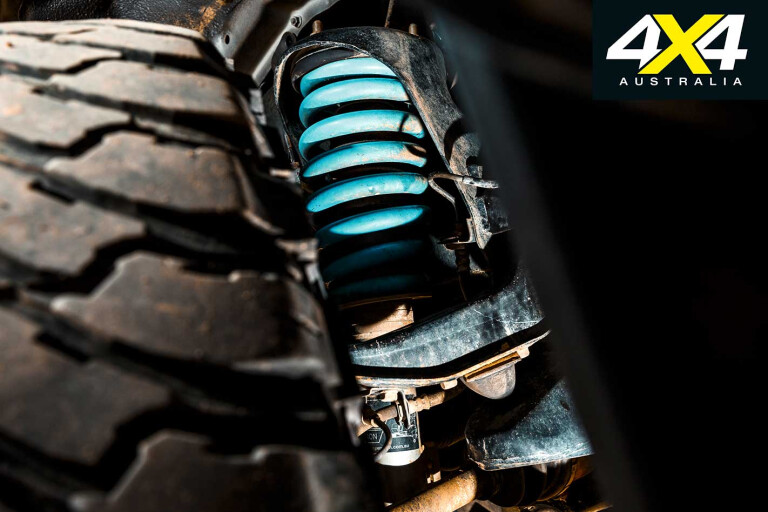
The battle wagon is running its progressive rate heavy-duty springs for an additional 50mm lift, giving a ride height increase of 100mm over stock. The rear suspension has been tweaked to promote more flex when the tracks call for articulation, and the whole lot is kept in line with a full set of nitro-charged twin-tube Ultimate Suspension shocks and struts.
While the modifications to make the tyres fit may be simple, the modifications to put a smile on Josh’s face when he hits the loud pedal are anything but.
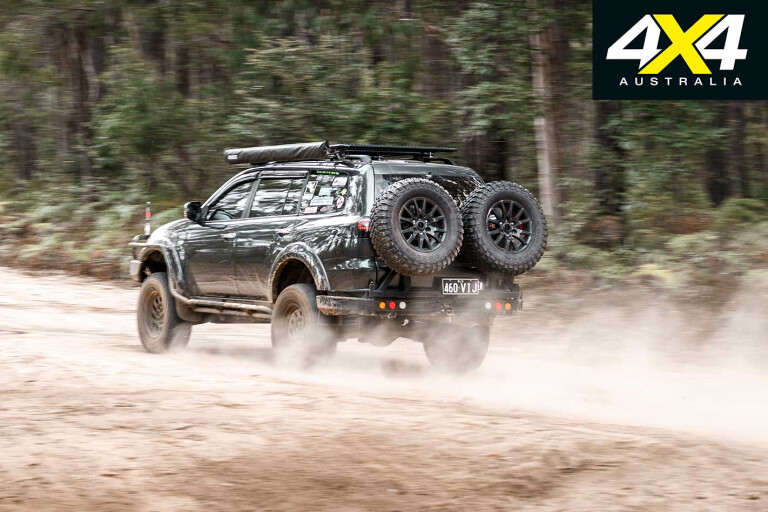
Starting from the loud end, the 2.5-litre four-cylinder turbo-diesel huffs clean air through the snorkel running down the A pillar. The air is compressed through the factory turbo before being squeezed into a full set of stainless steel intercooler pipes from Forefront Industries, addressing one of the only chinks in the Challenger’s armour, split factory intercooler hoses.
Josh has given the throttle response a hurry-up, too, with a Windbooster throttle controller knocking out some of the throttle lag, before the spent gases bark their way out the rear through a full 3-inch exhaust system courtesy of Scott’s Rods.
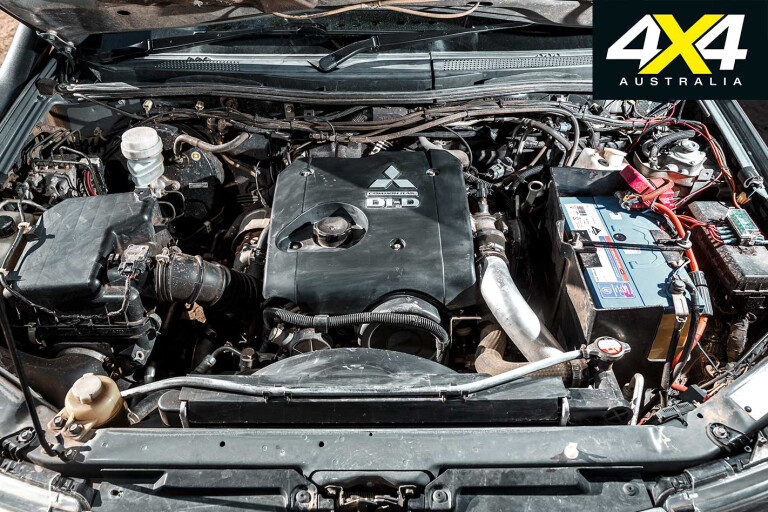
From here, power is sent through the five-speed factory auto tranny, before Mitsubishi’s Super Select 4WD system fires power off to the front open diff and locked rear diff. To ensure the oily bits stay inside the engine, Josh fitted a set of 4mm-thick BushSkinz bash plates to protect the intercooler and engine sump, with a Boo’s plate protecting the auto trans.
Much like the driveline and suspension, the Mitsubishi’s interior is so close to the mark from stock there’s very little needed in the modification front to make it a capable tourer. The first chip off the block was upgraded monitoring systems to ensure the engine stays in one piece.

A twin-gauge pillar pod has been tweaked for the Challenger’s unique pillar profile before being filled with SAAS boost and EGT gauges. An Engine Data Scan system also got the nod to keep an eye on the diesel’s vitals on remote trips. A Uniden UHF got optioned up for inter-convoy comms, with an extensive Sony stereo replacing the Challenger’s factory offering.
Rounding out the touring setup was pretty basic. A set of removable tubs store Josh’s camping gear, helping keep weight down in the rear; the stock seats have been tweaked to improve lumbar support, and he’s added a few bits of interior protection here and there to keep it in one piece for years to come.
In fact, the only question really hanging over Josh’s head is if he’ll bolt the rooftop tent down for long trips or throw a swag in the back for hardcore weekenders. One thing is for sure, though, Australian 4WDs are getting more unique, and that’s a win in anyone’s book.
Superman!

IN A WORLD of sticker-pack special editions, it’s easy to dismiss anything like “Super-Select” as just another gimmick, but the reality is far different. Mitsubishi’s ace in the hole is its intelligent 4WD system in use for the better part of three decades.
Rather than forcing customers to choose between full-time 4WD (similar to late model Land Cruisers) and part-time (as found in cheaper options like Hiluxes and Rangers), Mitsubishi gives drivers the choice at the flick of a switch.
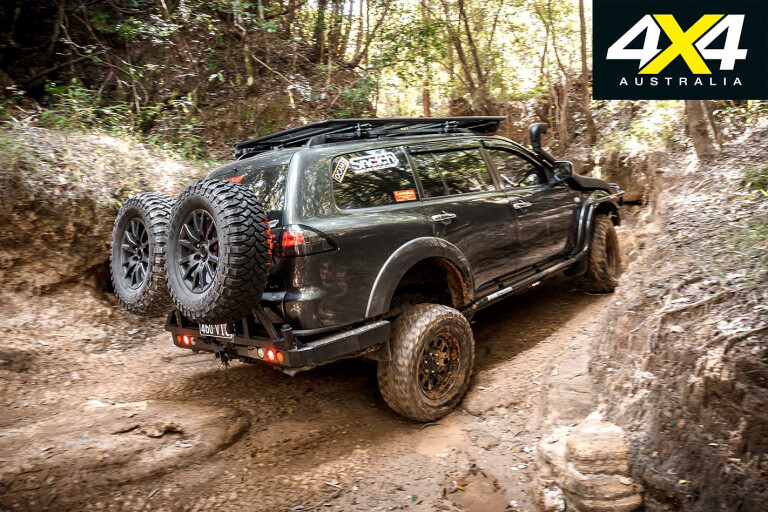
2H sends drive just to the rear axle, disconnecting the front to save on fuel usage, while 4H allows the Challenger to function like an AWD, perfect for dirt-road touring, snowy or icy conditions.
A centre diff allows the 4WD system to be used on high traction surfaces without destroying itself like a typical part-time system would. From here, the centre diff can be locked to give a typical 4H setup like most of its competitors, then down into 4L when lower gearing and more control is required. If viscous hubs and diff oil were cake, we’d be making a joke about eating them right now.

COMMENTS